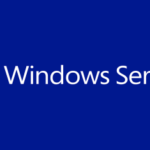How to Add User to Sudoers in CentOS.
To grant a user sudo access, you have two options. The first option is to add the user to the sudoers file, which contains information about which users and groups have sudo privileges and at what level. The second option is to add the user to the sudo group, which is defined in the sudoers file. Standardmäßig, on RedHat-based distributions like CentOS and Fedora, members of the “wheel” group have sudo privileges.
To add a user to the “wheel” Gruppe, the easiest way is to run the following command as root or another sudo user, replacing “username” mit dem tatsächlichen Benutzernamen:
usermod -aG wheel usernameGranting sudo access using this method is sufficient for most use cases. To test the sudo access, leiten Sie die “whoami” Befehl. If the user has sudo access, the command will print “root”. If you get an error saying “user is not in the sudoers file”, it means that the user doesn’t have sudo privileges.
sudo whoamiIf you want to grant customized access to commands and configure custom security policies for the user, you can add the user to the sudoers file or create a new configuration file in the /etc/sudoers.d directory. To edit the sudoers file, Benutze die “visudo” Befehl. This command checks the file for syntax errors when you save it. If you open the file with a text editor, a syntax error may result in losing the sudo access. To allow a user to run sudo commands without being asked for a password, add the following line to the end of the file:
username ALL=(ALL) NOPASSWD:ALLTo allow the user to run only specific commands via sudo, add the following line:
username ALL=(ALL) /usr/bin/du, /usr/bin/pingAlternatively, you can achieve the same by creating a new file with the authorization rules in the /etc/sudoers.d directory. This approach makes the management of the sudo privileges more maintainable. The name of the file is not important, but it is a common practice to name the file after the username.
echo "username ALL=(ALL) NOPASSWD:ALL" | sudo tee /etc/sudoers.d/username





















